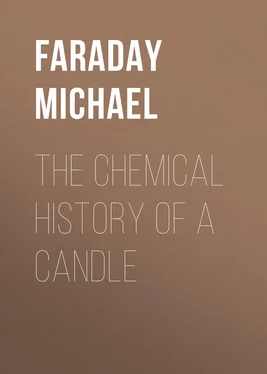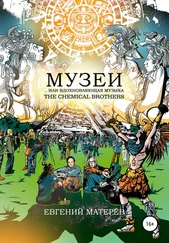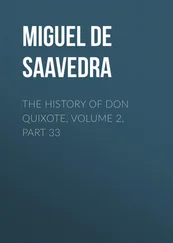Michael Faraday - The Chemical History of a Candle
Здесь есть возможность читать онлайн «Michael Faraday - The Chemical History of a Candle» — ознакомительный отрывок электронной книги совершенно бесплатно, а после прочтения отрывка купить полную версию. В некоторых случаях можно слушать аудио, скачать через торрент в формате fb2 и присутствует краткое содержание. Жанр: foreign_edu, Химия, на английском языке. Описание произведения, (предисловие) а так же отзывы посетителей доступны на портале библиотеки ЛибКат.
- Название:The Chemical History of a Candle
- Автор:
- Жанр:
- Год:неизвестен
- ISBN:нет данных
- Рейтинг книги:4 / 5. Голосов: 1
-
Избранное:Добавить в избранное
- Отзывы:
-
Ваша оценка:
- 80
- 1
- 2
- 3
- 4
- 5
The Chemical History of a Candle: краткое содержание, описание и аннотация
Предлагаем к чтению аннотацию, описание, краткое содержание или предисловие (зависит от того, что написал сам автор книги «The Chemical History of a Candle»). Если вы не нашли необходимую информацию о книге — напишите в комментариях, мы постараемся отыскать её.
The Chemical History of a Candle — читать онлайн ознакомительный отрывок
Ниже представлен текст книги, разбитый по страницам. Система сохранения места последней прочитанной страницы, позволяет с удобством читать онлайн бесплатно книгу «The Chemical History of a Candle», без необходимости каждый раз заново искать на чём Вы остановились. Поставьте закладку, и сможете в любой момент перейти на страницу, на которой закончили чтение.
Интервал:
Закладка:
Michael Faraday
The Chemical History of a Candle
PREFACE
From the primitive pine-torch to the paraffin candle, how wide an interval! between them how vast a contrast! The means adopted by man to illuminate his home at night, stamp at once his position in the scale of civilisation. The fluid bitumen of the far East, blazing in rude vessels of baked earth; the Etruscan lamp, exquisite in form, yet ill adapted to its office; the whale, seal, or bear fat, filling the hut of the Esquimaux or Lap with odour rather than light; the huge wax candle on the glittering altar, the range of gas lamps in our streets,—all have their stories to tell. All, if they could speak (and, after their own manner, they can), might warm our hearts in telling, how they have ministered to man's comfort, love of home, toil, and devotion.
Surely, among the millions of fire-worshippers and fire-users who have passed away in earlier ages, some have pondered over the mystery of fire; perhaps some clear minds have guessed shrewdly near the truth. Think of the time man has lived in hopeless ignorance: think that only during a period which might be spanned by the life of one man, has the truth been known.
Atom by atom, link by link, has the reasoning chain been forged. Some links, too quickly and too slightly made, have given way, and been replaced by better work; but now the great phenomena are known—the outline is correctly and firmly drawn—cunning artists are filling in the rest, and the child who masters these Lectures knows more of fire than Aristotle did.
The candle itself is now made to light up the dark places of nature; the blowpipe and the prism are adding to our knowledge of the earth's crust; but the torch must come first.
Among the readers of this book some few may devote themselves to increasing the stores of knowledge: the Lamp of Science must burn. " Alere flammam. "
W. CROOKES.THE CHEMICAL HISTORY OF A CANDLE
LECTURE I
I purpose, in return for the honour you do us by coming to see what are our proceedings here, to bring before you, in the course of these lectures, the Chemical History of a Candle. I have taken this subject on a former occasion; and were it left to my own will, I should prefer to repeat it almost every year—so abundant is the interest that attaches itself to the subject, so wonderful are the varieties of outlet which it offers into the various departments of philosophy. There is not a law under which any part of this universe is governed which does not come into play, and is touched upon in these phenomena. There is no better, there is no more open door by which you can enter into the study of natural philosophy, than by considering the physical phenomena of a candle. I trust, therefore, I shall not disappoint you in choosing this for my subject rather than any newer topic, which could not be better, were it even so good.
And before proceeding, let me say this also—that though our subject be so great, and our intention that of treating it honestly, seriously, and philosophically, yet I mean to pass away from all those who are seniors amongst us. I claim the privilege of speaking to juveniles as a juvenile myself. I have done so on former occasions—and, if you please, I shall do so again. And though I stand here with the knowledge of having the words I utter given to the world, yet that shall not deter me from speaking in the same familiar way to those whom I esteem nearest to me on this occasion.
And now, my boys and girls, I must first tell you of what candles are made. Some are great curiosities. I have here some bits of timber, branches of trees particularly famous for their burning. And here you see a piece of that very curious substance taken out of some of the bogs in Ireland, called candle-wood ,—a hard, strong, excellent wood, evidently fitted for good work as a resister of force, and yet withal burning so well that where it is found they make splinters of it, and torches, since it burns like a candle, and gives a very good light indeed. And in this wood we have one of the most beautiful illustrations of the general nature of a candle that I can possibly give. The fuel provided, the means of bringing that fuel to the place of chemical action, the regular and gradual supply of air to that place of action—heat and light—all produced by a little piece of wood of this kind, forming, in fact, a natural candle.
But we must speak of candles as they are in commerce. Here are a couple of candles commonly called dips. They are made of lengths of cotton cut off, hung up by a loop, dipped into melted tallow, taken out again and cooled, then re-dipped until there is an accumulation of tallow round the cotton. In order that you may have an idea of the various characters of these candles, you see these which I hold in my hand—they are very small, and very curious. They are, or were, the candles used by the miners in coal mines. In olden times the miner had to find his own candles; and it was supposed that a small candle would not so soon set fire to the fire-damp in the coal mines as a large one; and for that reason, as well as for economy's sake, he had candles made of this sort—20, 30, 40, or 60 to the pound. They have been replaced since then by the steel-mill, and then by the Davy-lamp, and other safety-lamps of various kinds. I have here a candle that was taken out of the Royal George 1 1 The Royal George sunk at Spithead on The 29th of August, 1782. Colonel Pasley commenced operations for the removal of the wreck by the explosion of gunpowder, in August, 1839. The candle which Professor Faraday exhibited must therefore have been exposed to the action of salt water for upwards of fifty-seven years.
, it is said, by Colonel Pasley. It has been sunk in the sea for many years, subject to the action of salt water. It shews you how well candles may be preserved; for though it is cracked about and broken a good deal, yet, when lighted, it goes on burning regularly, and the tallow resumes its natural condition as soon as it is fused.
Mr. Field, of Lambeth, has supplied me abundantly with beautiful illustrations of the candle and its materials. I shall therefore now refer to them. And, first, there is the suet—the fat of the ox—Russian tallow, I believe, employed in the manufacture of these dips, which Gay Lussac, or some one who entrusted him with his knowledge, converted into that beautiful substance, stearin, which you see lying beside it. A candle, you know, is not now a greasy thing like an ordinary tallow candle, but a clean thing, and you may almost scrape off and pulverise the drops which fall from it without soiling anything. This is the process he adopted 2 2 The fat or tallow consists of a chemical combination of fatty acids with glycerine. The lime unites with the palmitic, oleic, and stearic acids, and separates the glycerine. After washing, the insoluble lime soap is decomposed with hot dilute sulphuric acid. The melted fatty acids thus rise as an oil to the surface, when they are decanted. They are again washed and cast into thin plates, which, when cold, are placed between layers of cocoa-nut matting, and submitted to intense hydraulic pressure. In this way the soft oleic acid is squeezed out, whilst the hard palmitic and stearic acids remain. These are further purified by pressure at a higher temperature, and washing in warm dilute sulphuric acid, when they are ready to be made into candles. These acids are harder and whiter than the fats from which they were obtained, whilst at the same time they are cleaner and more combustible.
:—The fat or tallow is first boiled with quick-lime, and made into a soap, and then the soap is decomposed by sulphuric acid, which takes away the lime, and leaves the fat re-arranged as stearic acid, whilst a quantity of glycerin is produced at the same time.
Интервал:
Закладка:
Похожие книги на «The Chemical History of a Candle»
Представляем Вашему вниманию похожие книги на «The Chemical History of a Candle» списком для выбора. Мы отобрали схожую по названию и смыслу литературу в надежде предоставить читателям больше вариантов отыскать новые, интересные, ещё непрочитанные произведения.
Обсуждение, отзывы о книге «The Chemical History of a Candle» и просто собственные мнения читателей. Оставьте ваши комментарии, напишите, что Вы думаете о произведении, его смысле или главных героях. Укажите что конкретно понравилось, а что нет, и почему Вы так считаете.





![Евгений Матерёв - Музеи… или вдохновляющая музыка The Chemical Brothers [litres самиздат]](/books/437288/evgenij-materev-muzei-ili-vdohnovlyayuchaya-muzyka-th-thumb.webp)






